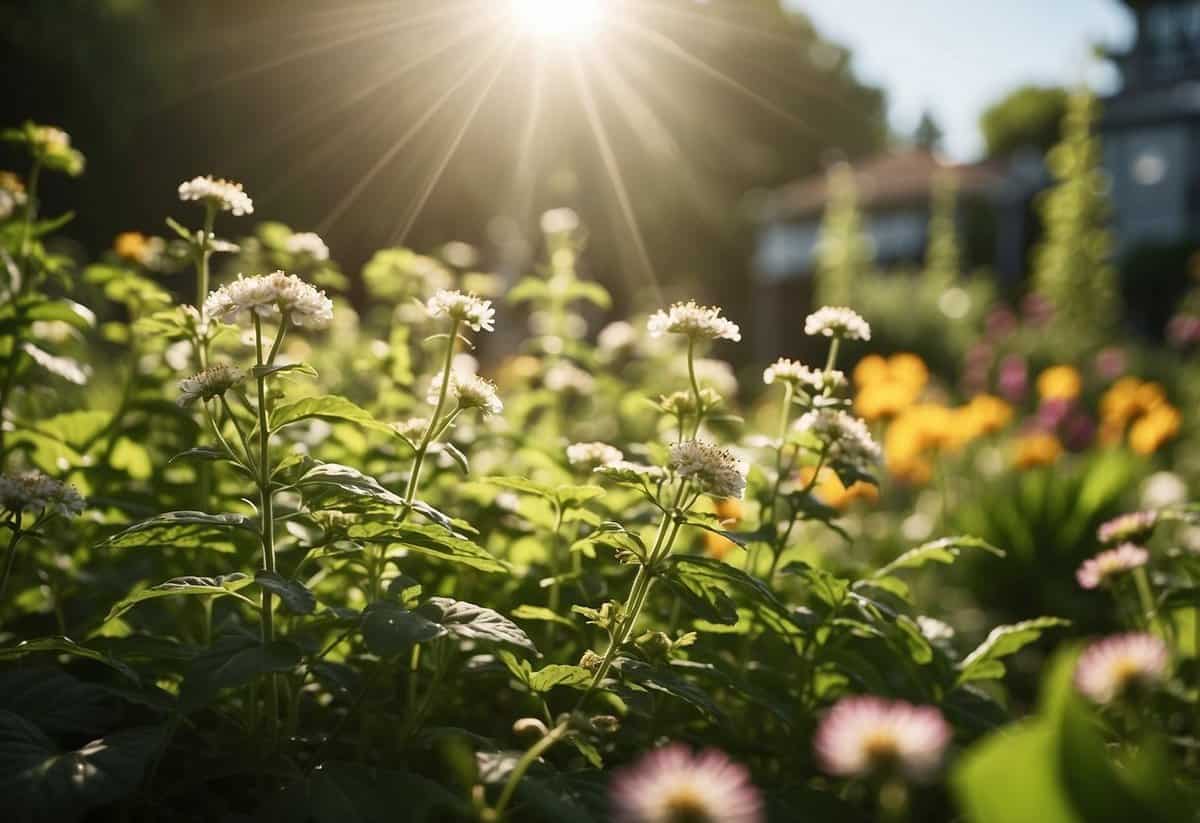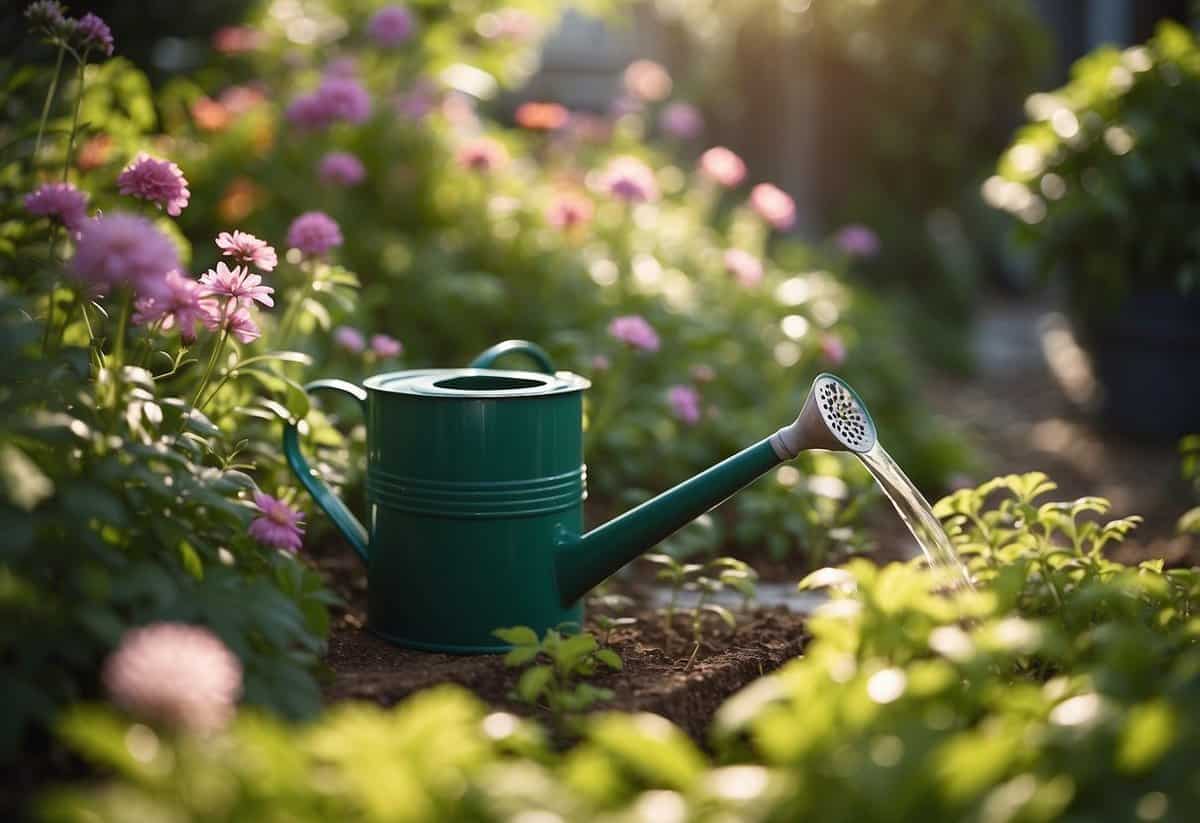June Garden Tips: Boost Your Summer Blooms
June is a busy month for gardeners. Your garden is thriving and needs a lot of attention. From watering to weeding, there’s a lot to keep track of to ensure your plants stay healthy and productive.

What should you focus on in June to keep your garden flourishing? There are essential tasks that can make a huge difference in your garden’s success. By following some straightforward tips, you can enjoy a bountiful and beautiful garden throughout the summer months.
1) Prune spring-flowering shrubs

Pruning spring-flowering shrubs is important for their health and looks. After they bloom, trim back the branches. This helps them grow better and stay strong.
Aim to prune in mid-June. If the flowers are gone by then, you know it’s the right time. Be careful not to cut too much. Just shape the plant and remove any dead or old parts.
For more detailed guidance, check out this helpful article on Homes & Gardens.
2) Apply Mulch to Retain Moisture

Applying mulch helps your garden retain moisture. It forms a protective barrier over the soil, reducing water loss.
Using organic mulches such as hardwood or pine needles can enrich the soil as they decay. This boosts garden fertility while keeping the soil moist.
For best results, lay mulch 2-3 inches thick. Avoid watering mulch from above, as this can block moisture from reaching roots. Instead, run soaker hoses or drip lines underneath the mulch layers. Check out more tips on Gardening Tasks To Do in June.
3) Deadhead Spent Blooms

Deadheading spent blooms is an easy task that keeps your garden looking fresh.
Snip off the dead flowers just above the next set of leaves. This helps to promote new blooms.
Use either pruning shears or your hands, depending on the plant’s needs. Deadheading also prevents the plant from wasting energy on seed production.
You can either compost the removed blooms or simply discard them. Happy gardening!
4) Plant Heat-Loving Vegetables

June is the perfect time to plant vegetables that thrive in the heat. Zucchini, for example, is an easy-to-grow summer squash that produces fruits quickly. Planting in warm soil over 70°F (21°C) works best.
Cucumbers also love the warmth. They grow quickly and can be harvested all summer long. Consider using a trellis to save space in your garden.
Okra is another excellent choice. This heat-tolerant vegetable can withstand hot and dry conditions. It’s great for soups, frying, or even fresh in salads.
5) Divide perennials

June is a great time to divide your perennials. This keeps them healthy and encourages new growth.
Before you start, water the plants well a day or two beforehand. This softens the soil and makes it easier to dig them up.
Using a spade or fork, dig around the plant, lifting it out gently. Separate the roots by hand or with a knife.
Replant the divisions right away in new spots or share them with friends. Make sure to water them after replanting to reduce transplant shock.
6) Harvest herbs for drying

Harvest your herbs in the morning after the dew has dried. This is when flavors and oils are the most concentrated. Snip the herbs just above a leaf pair.
Lay your herbs in a single layer on a plate and cover with a paper towel. Microwave them for 30 seconds, then check for dryness. Repeat if necessary.
Alternatively, you can use a food dehydrator set to 100ºF. This method works well with herbs like thyme and oregano. Keep them out of direct sunlight while drying to preserve their flavor.
7) Check for pests and diseases

Keep an eye out for common pests like aphids, Japanese beetles, and spider mites. They thrive in the warm June weather.
Watch for signs of diseases such as powdery mildew, black spot, and tomato blight. These spread easily in high humidity conditions.
Address issues promptly to keep your garden healthy. You can find more tips on identifying and treating pests.
8) Water deeply once a week

To keep your garden thriving, water your plants deeply once a week. This helps roots grow strong and reach deeper into the soil.
Deep watering is especially important for trees like citrus and avocado.
Remember to water early in the morning or late in the evening to avoid evaporation. This will keep your garden lush and healthy throughout June.
9) Add compost to garden beds

Adding compost to your garden beds in June can boost soil health. Spread a two- or three-inch layer of compost across new beds and mix it into the top few inches.
In established beds, add compost by applying as a mulch around plants. This helps retain moisture and suppress weeds. Compost also introduces nutrients and improves soil structure, enhancing your garden’s productivity.
10) Stake Tall or Top-Heavy Plants

Staking tall or top-heavy plants helps keep them upright and healthy.
Insert stakes into the ground next to each plant, about an inch or two away from the stem. Tie the plant to the stake using natural twine or string.
Make sure the ties are snug, but not too tight—your plant should still be able to sway in the wind.
General Care Tips for June Gardens

June is a crucial time for garden care, as the weather warms and your plants require extra attention. Focus on the essentials: proper watering, applying mulch, and managing weeds.
Watering Strategies
In June, consistent watering is key. Early mornings are the best time to water your plants because it allows moisture to reach the roots without quick evaporation. Aim to water deeply and less frequently, encouraging roots to grow deeper.
You might want to check your irrigation system to ensure it’s ready for drought conditions. Drip irrigation or soaker hoses can be very efficient, reducing water waste.
Remember to keep an eye on rainfall and adjust your watering schedule accordingly. Too much water can be as harmful as too little.
Mulching Techniques
Applying mulch helps retain soil moisture and regulate temperature. Organic mulches such as straw, compost, or wood chips can be very effective. Spread a layer about 2-3 inches thick around plants, making sure not to bury the stems.
Mulch adds nutrients to the soil as it breaks down. It also acts as a barrier against pests and diseases, reducing the need for chemical treatments.
Choose the right type of mulch for your plants. For instance, bark mulch is great for trees and shrubs, while compost or straw works well for vegetables.
Weed Management
Weeding is an ongoing task, especially in June. Weeds compete with your plants for water and nutrients, so removing them is essential. Pull weeds by hand or use a hoe, being careful not to damage the roots of your plants.
Consider using a hoe or a weeding tool to make the job easier. Mulch can also help suppress weed growth by blocking light.
Regularly inspect your garden for weeds, ideally once a week. By staying on top of this task, you can prevent weeds from taking over and maintain a healthy garden environment.
Dealing with Common Pests and Diseases

June can bring various garden pests and diseases that threaten your plants. Knowing how to identify these issues and using natural methods to control them can help keep your garden healthy.
Identifying Common Pests
Certain pests are more active in June, such as aphids, slugs, and whiteflies. Aphids are small, often green insects that cluster on new growth. They suck sap from plants, causing leaves to curl and yellow.
Slugs are slimy, and they leave a silvery trail. They feed on leaves, especially at night. Whiteflies are tiny, white insects that fly off when you disturb the plant. Their feeding can weaken the plant and cause leaves to drop.
Powdery mildew is a common disease during this time. It appears as a white, powdery coating on leaves and stems. Blight can infect tomatoes and potatoes, causing dark spots on leaves and fruit.
Natural Pest Control Methods
To control pests without chemicals, start with beneficial insects like ladybugs and lacewings, which eat aphids and other pests. You can also use neem oil for a natural pesticide that works on many common garden insects.
Handpicking pests like slugs in the evening can reduce their numbers. Set out beer traps to manage slugs; they are attracted to the yeast and will drown in the liquid.
For diseases like powdery mildew, milk sprays made from diluted milk can help. Regularly pruning and ensuring good air circulation can prevent outbreaks. Crop rotation and cleaning up garden debris can minimize blight and other diseases.







